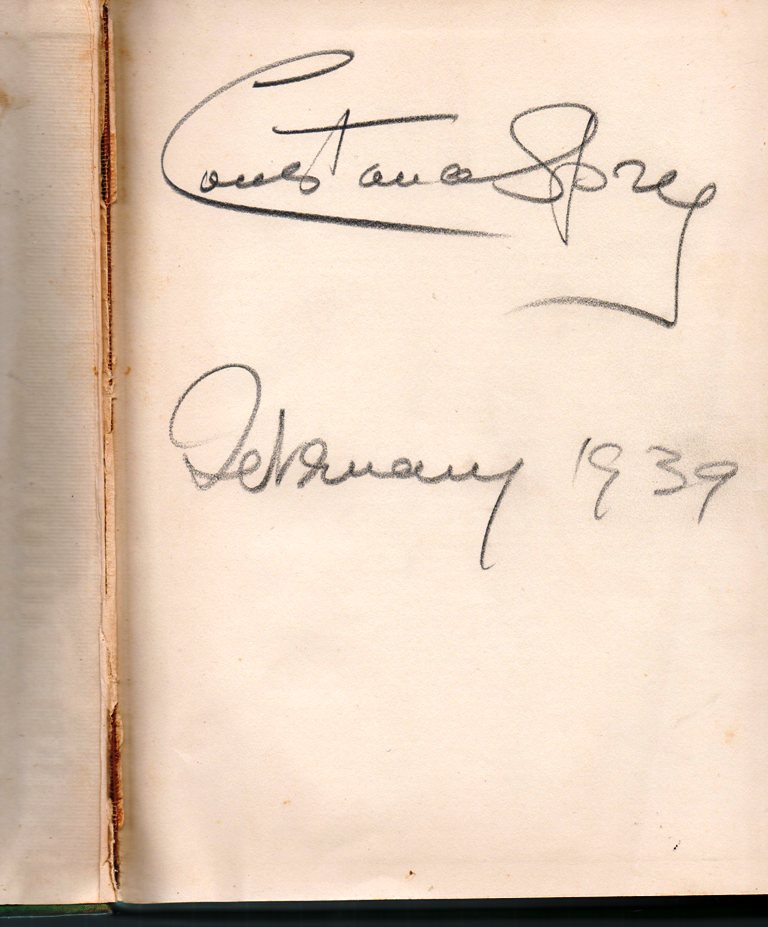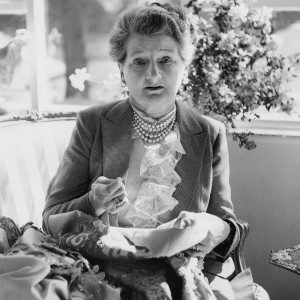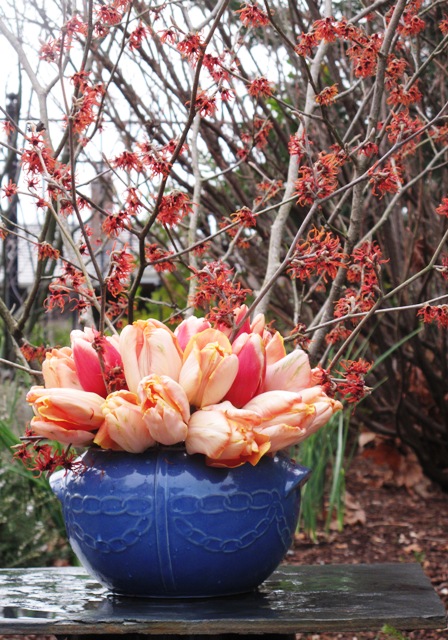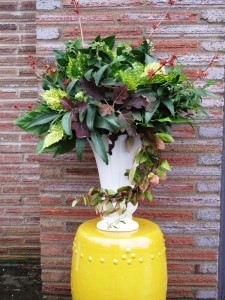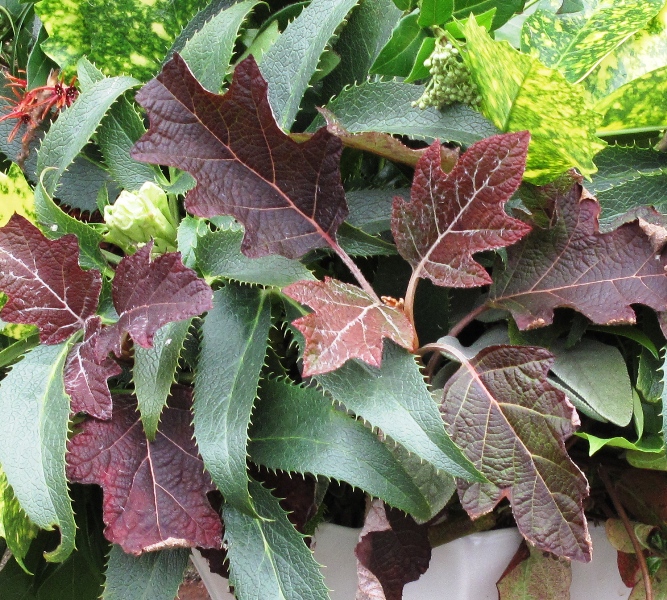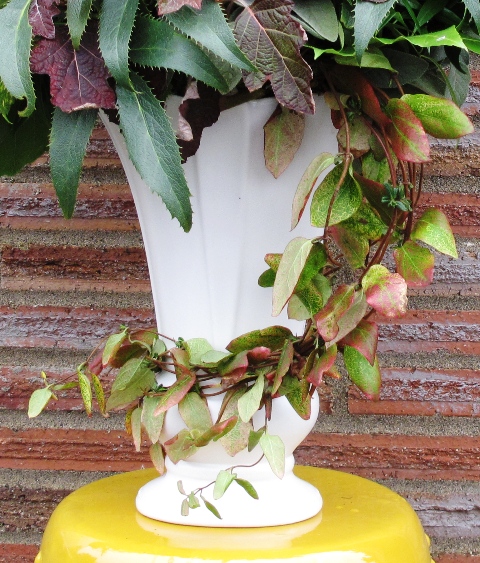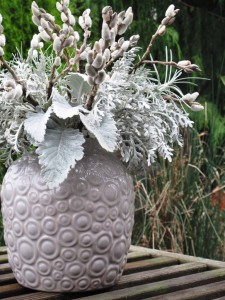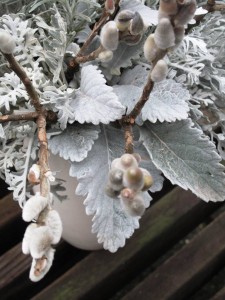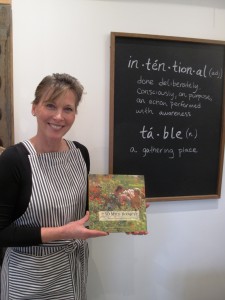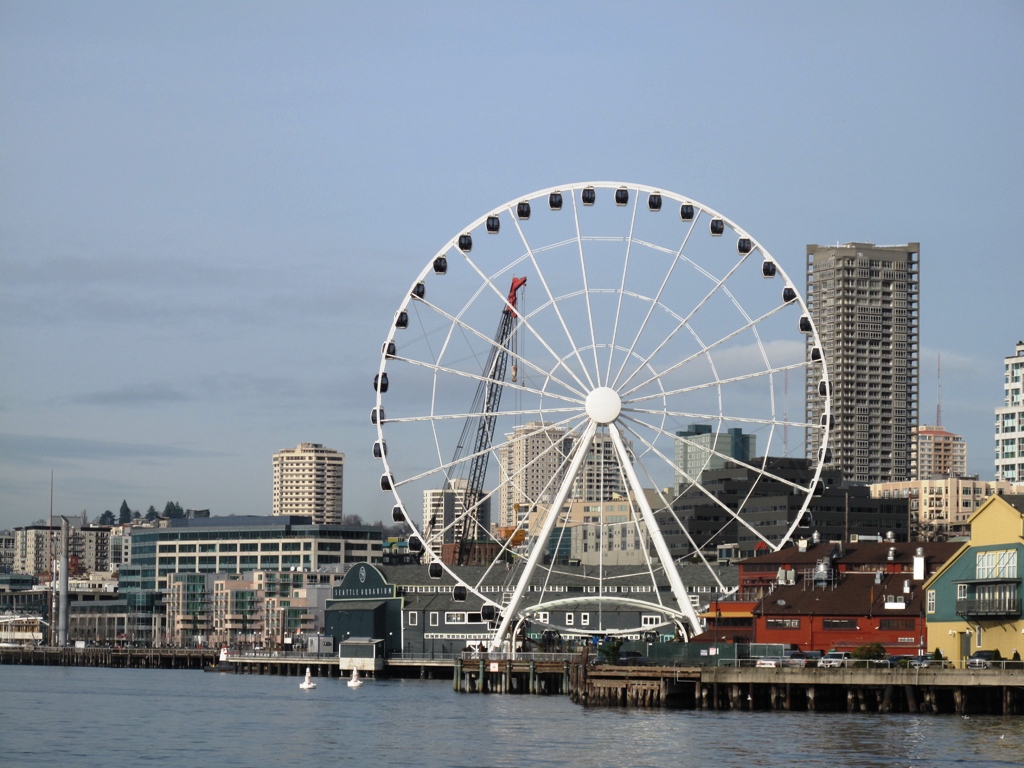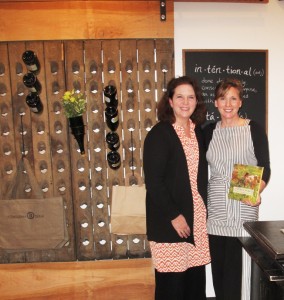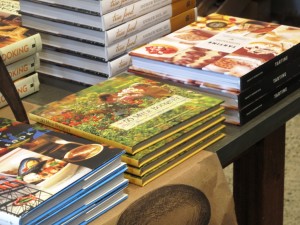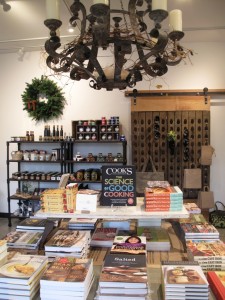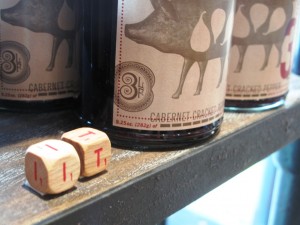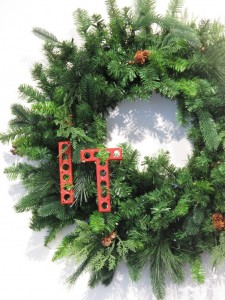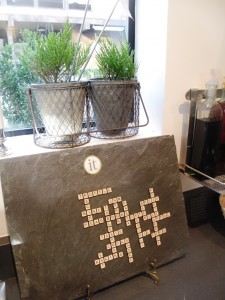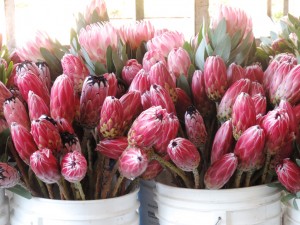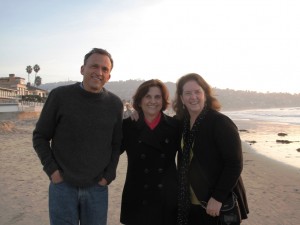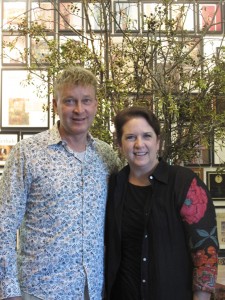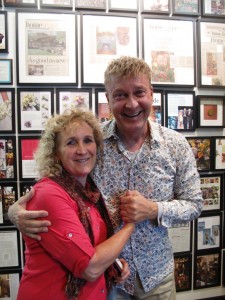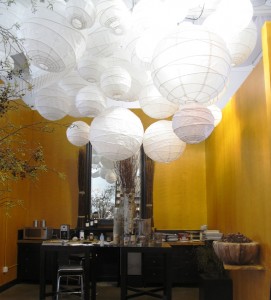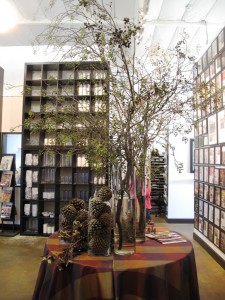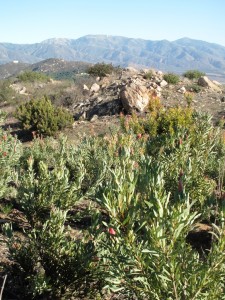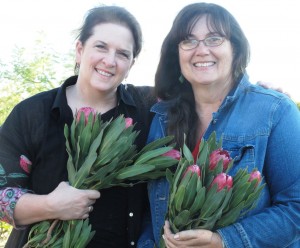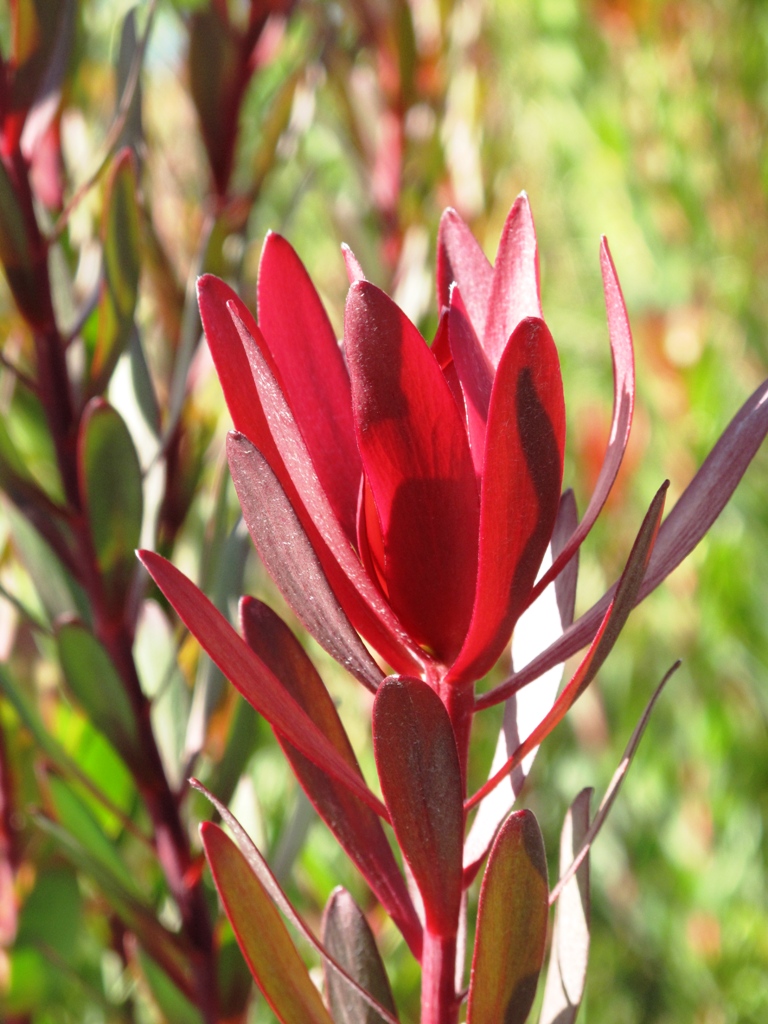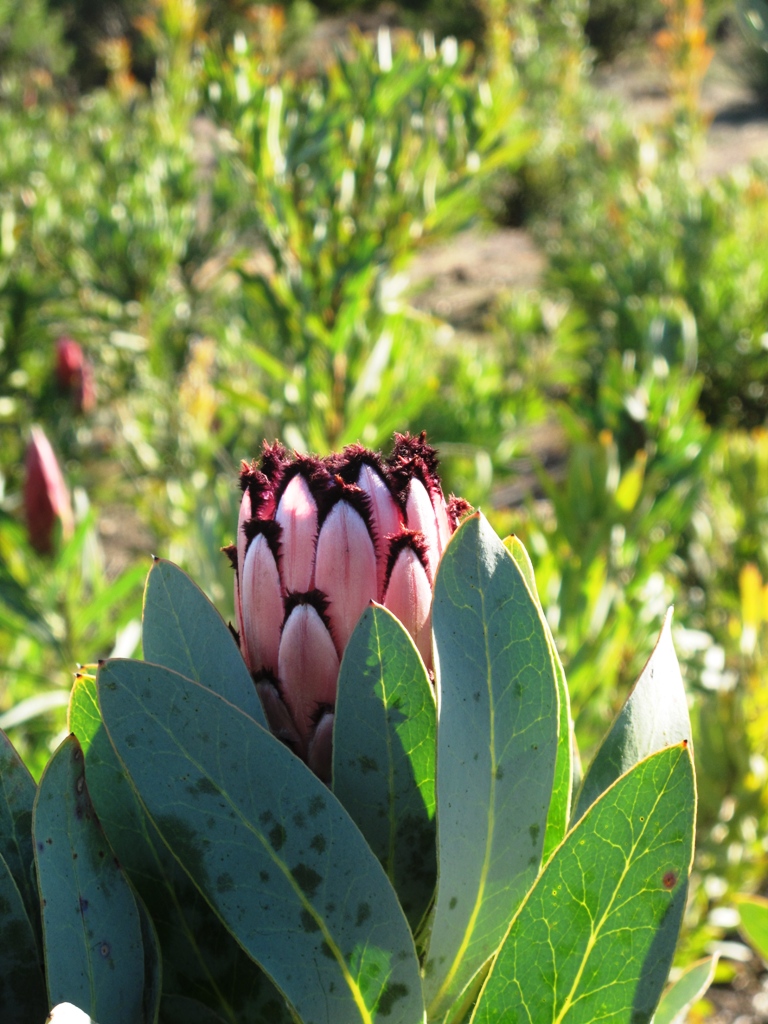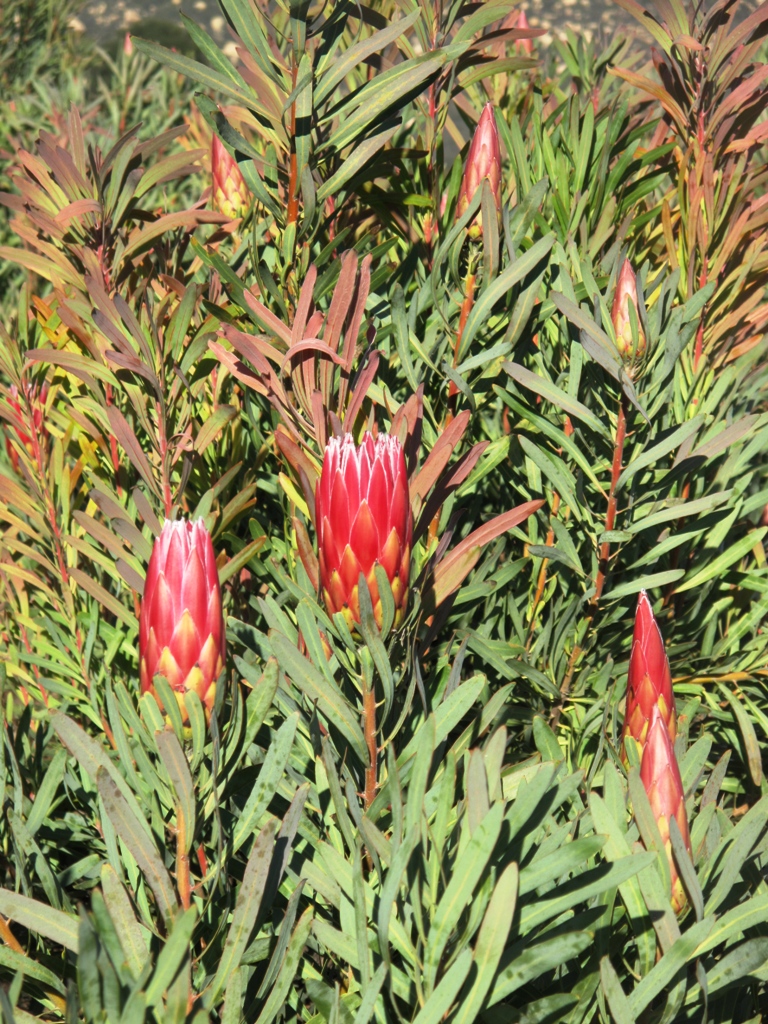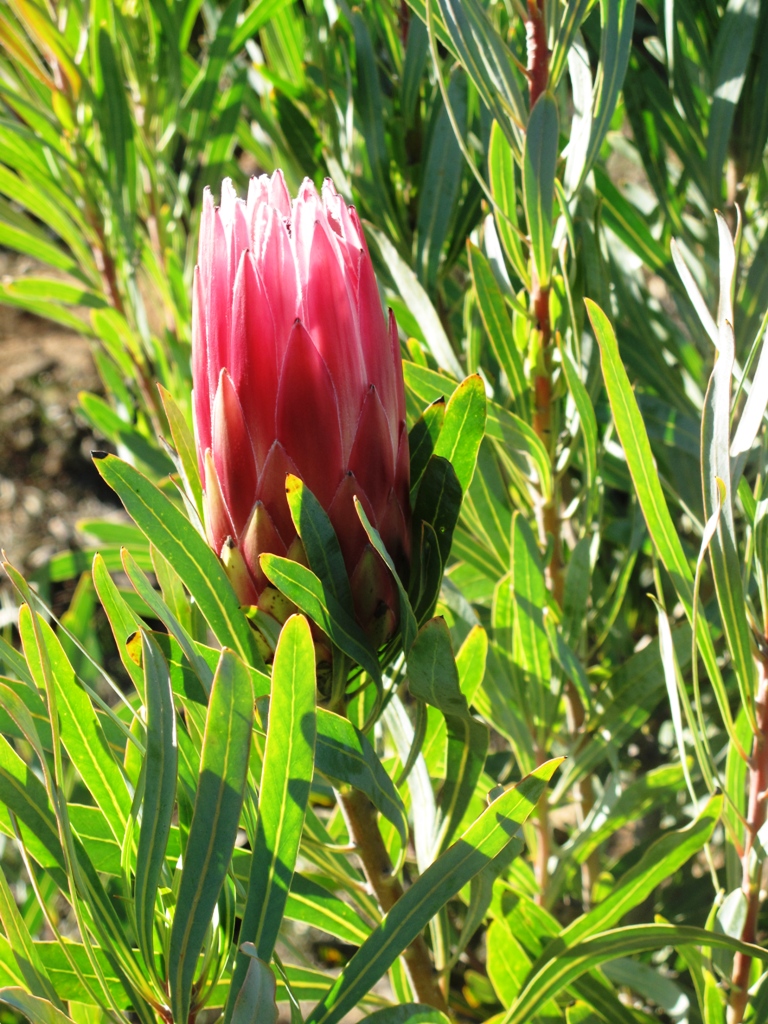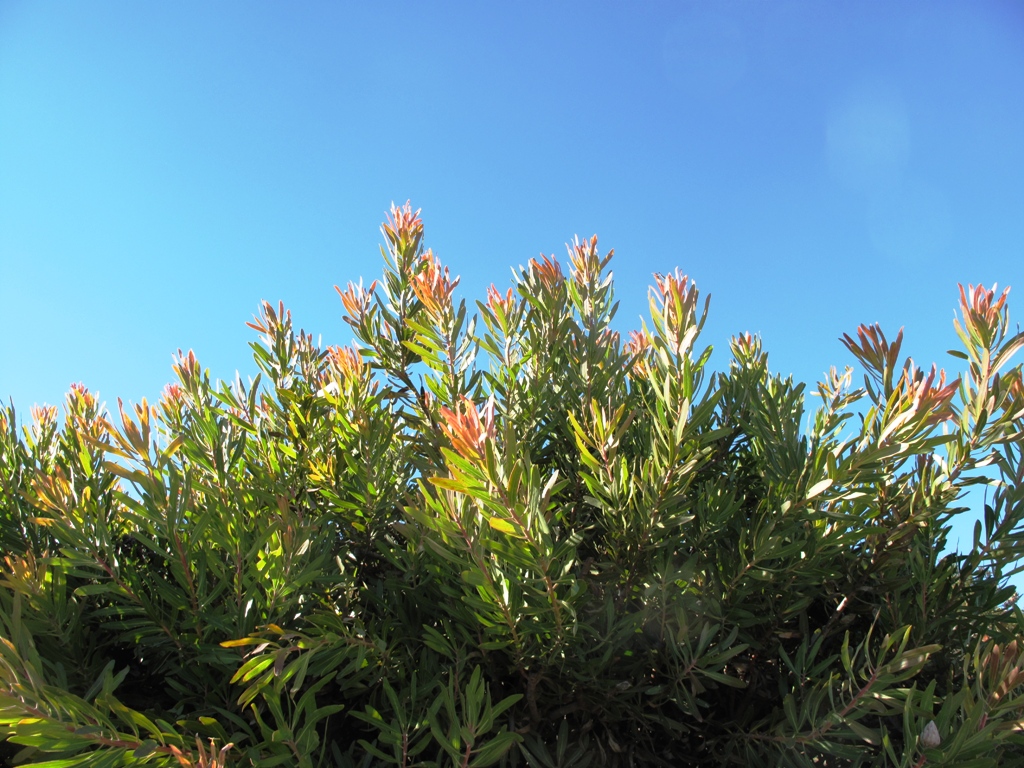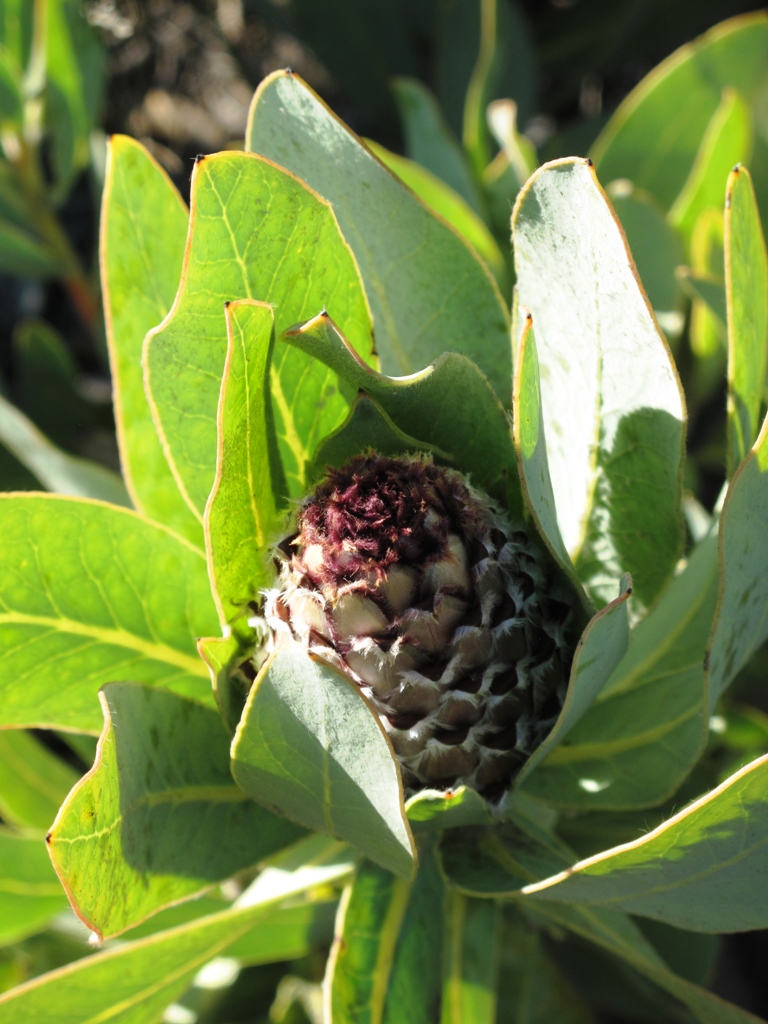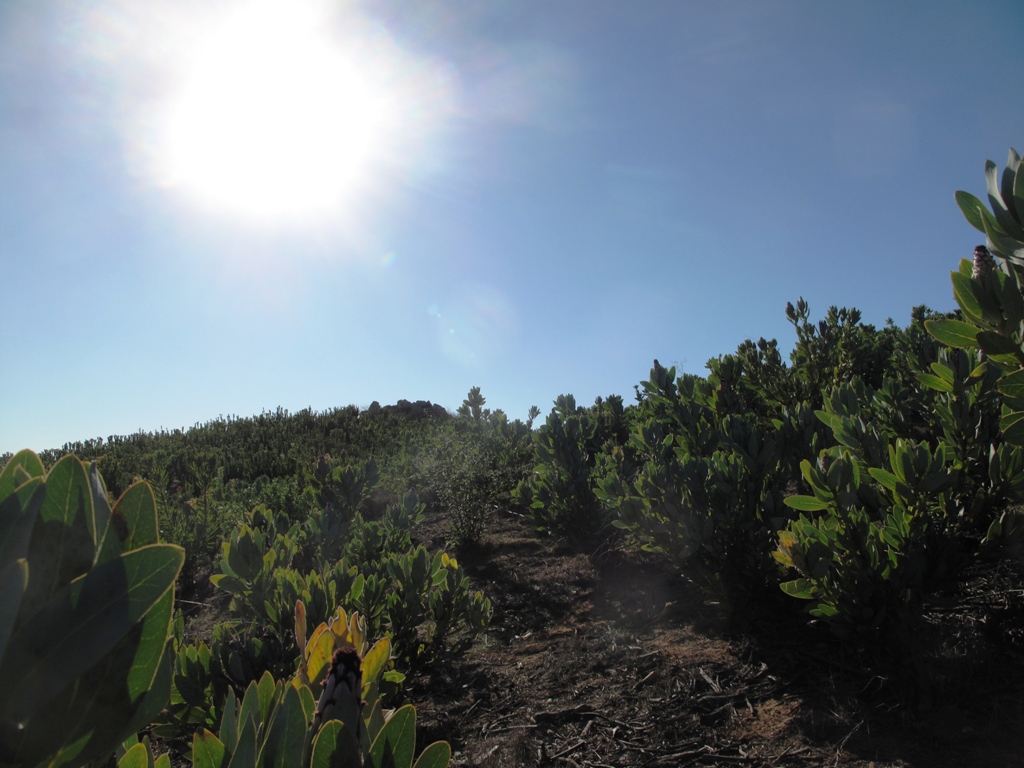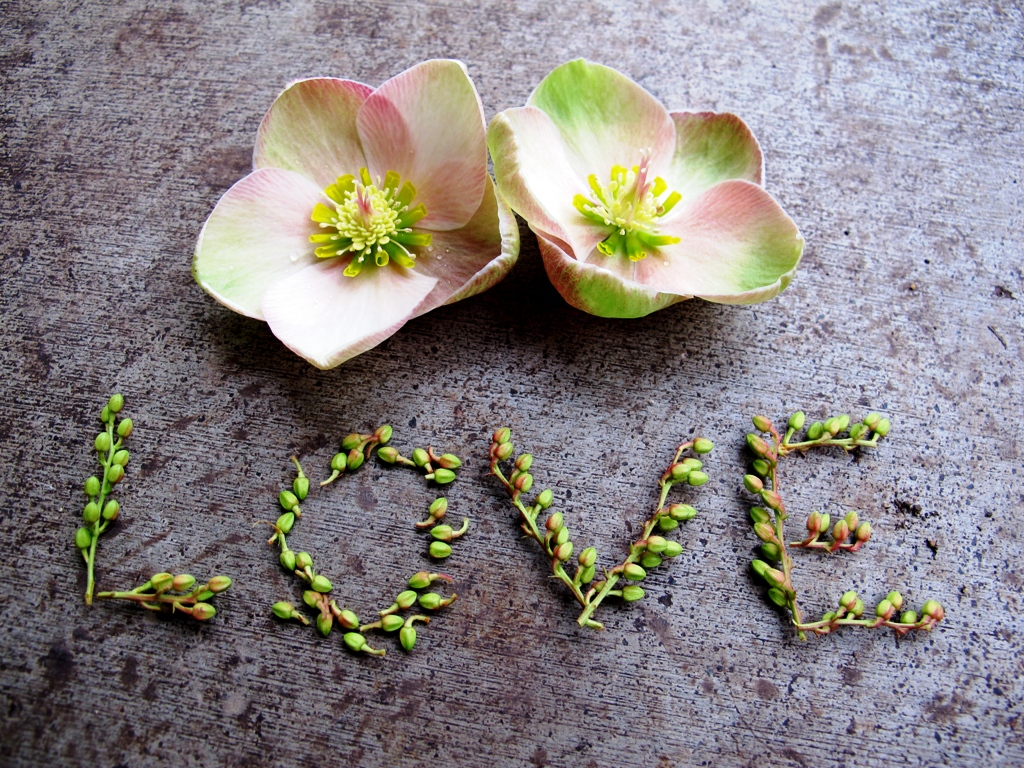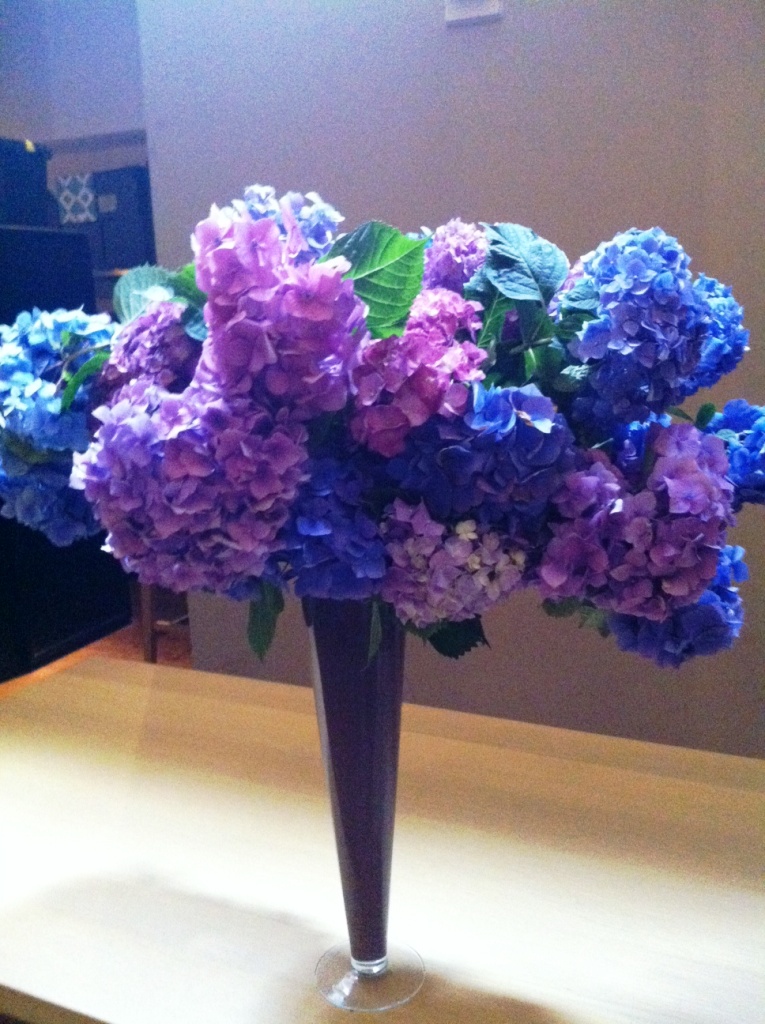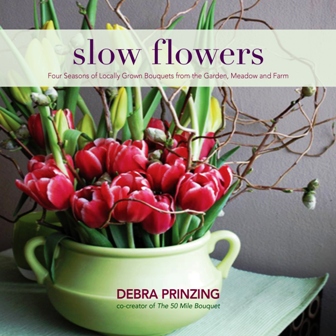[Author’s note: This is the introduction of my forthcoming book, “Slow Flowers,” which will be published February 1, 2013. You can pre-order it here.]
My 52 Weeks of Local Flowers
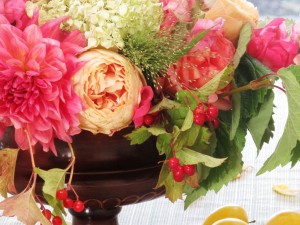
A summer still life.
One of the joys of gardening is to step out my back door and clip a few sprigs to bring inside. The day’s prettiest blooms and just-unfurled leaves – assembled simply into a bunch and displayed in a jar of water – provide everything I need to start the day. The tiny arrangement graces my kitchen counter or brightens a spot by the keyboard, connecting me with the natural world even when I’m “stuck” indoors, away from my beloved garden.
IS THIS FLORAL DESIGN?
I guess it is, but like avid gardeners everywhere, I certainly never considered myself a florist. After all, despite hundreds of hours of horticulture training, I never once studied the art of flowers, other than one weekend class on liturgical arrangements that I took with my Episcopal priest friend Britt Olson. Floral design was an entirely different sort of activity for which I wasn’t qualified (I thought). I’m a writer and a lover of plants, but not an artist.
I have written about floral design for years, interviewing top florists around the country for articles in magazines like Seattle Bride, Romantic Homes and Sunset. I loved reporting those stories, and I have to admit feeling a twinge of jealousy as I listened to flower artists answer questions about their style and technique, their use of botanicals and vessels – and especially, their inspiration.
I have spent my life observing and writing about creative people. But I didn’t really believe that I was one of them! I was the classic journalist: a detached outsider documenting what she heard and saw.
Yet writers are sponges and driven by an insatiable, need-to-know curiosity. In pursuit of our stories, we can’t help but absorb knowledge about myriad topics, taught to us by generous subjects whose own passion is infectious. That’s exactly what happened to me while story-gathering for my most recent project, The 50 Mile Bouquet. I loved shaping the narrative about the many talented individuals who are part of the local flower movement.
During the creation of that book with photographer David Perry, my own bouquet-making activity was on the rise. I was beginning to see the gardens around me in a new way: in all four seasons, rather than only during July when the perennials peaked. The palette of possibilities expanded greatly, thanks to my interviews with the gifted flower farmers and designers profiled in The 50 Mile Bouquet.
My previously-spontaneous bouquet-making gestures soon became a weekly ritual. I discovered that just like designing a container garden or a display border, there is great satisfaction in choosing flowers and companion elements – and then assembling them into a beautiful composition in just the right vase.
I often photographed my design process. Documenting each step seemed like a good idea, either for my own reference, for a blog post or to illustrate a future lecture.
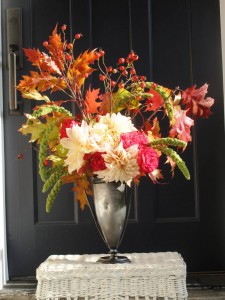
The bouquet that started it all!
And then, one September day as I was making a bouquet out of burnished autumn leaves, green millet seed heads and the last dahlias of the fading summer, I had a brainstorm that led to the birth of my new book, Slow Flowers. I jotted down some ideas, including this one:
There’s a common misconception that it’s impossible, or at least tricky, to find enough beautiful ingredients in one’s own garden or region during certain times of the year for creating interesting seasonal floral arrangements. Taking the Do-it-Yourself designer’s point of view, I want to disprove that notion by making bouquet-a-week – all year long. My goal is to inspire others to create personal bouquets with what’s at hand, if only they begin to see what’s around them with new eyes.
I launched the project then and there, and continued it for 52 weeks. As each season unfolded, so too did my passion for floral design. My experiment turned into a season-by-season, week-by-week book of ideas and inspiration for gardeners and DIY floral designers.
WHY SLOW FLOWERS?
The idea for the title of this book emerged organically. We had used the term “slow flowers” as part of the marketing for The 50 Mile Bouquet – and to our surprise, nearly every major newspaper and magazine that reviewed the book picked up on it as a reference to a cultural shift in consumer attitudes toward local, seasonal and sustainably-grown flowers.
So when editor Cathy Dees and publisher Paul Kelly and I got serious about finding a book title, Slow Flowers seemed like the “just-right” description of my one-year floral design experiment. Thanks to the culinary pioneers who popularized the Slow Food movement, it now seems like you can put “slow” in front of any term to convey a different philosophy or approach to that subject. When I say the phrase “slow flowers,” there are those who immediately understand it to mean: I have made a conscious choice.
My blooms, buds, leaves and vines are definitely in season; not, for example, grown and brought in from elsewhere around the world during the wet, cold winter months in my hometown of Seattle. So come December and January, my commitment to sourcing locally-grown floral materials sends me to the conifer boughs, colored twigs, berry-producing evergreens – and the occasional greenhouse-grown rose, lily or tulip, just to satisfy my hunger for a bloom.
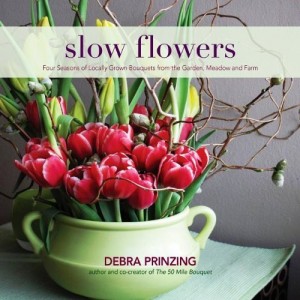
I made my book's cover bouquet using locally-grown tulips and curly willow; the camellia stems (with buds) came from my garden.
Slow Flowers (the concept and the book) is also about the artisanal, anti-mass-market approach to celebrations, festivities and floral gifts of love. I value my local sources. If not clipped from my own shrubs or cutting garden, I want to know where the flowers and greenery were grown, and who grew them. Having a relationship with the grower who planted and nurtured each flower is nothing short of magical. I call so many flower farmers around the country my friends. They are the unsung heroes – the faces behind the flowers we love.
Finally, Slow Flowers reflects life lived in the slower lane. My family, friends and professional colleagues know that it’s almost impossible for me to do anything slowly. I’m the queen of multitasking; I just can’t help myself. There are too many exciting opportunities (or bright, shiny objects) that command my interest. But this “year in flowers” was altogether different. I can only compare it to the practice of praying or meditating. I didn’t realize that those few hours I spent each week, gathering and choosing petals and stems, arranging them in a special vessel, and then figuring out where and how to capture the finished design through my camera lens, would be so personally enriching.
I used all my senses. Unplugged, away from electronic distractions, I studied the form, line, texture, subtle color and utter uniqueness of each stem. What a gift to slow down and experience the moment. I don’t know much about ikebana, the Japanese art of arranging flowers, but I understand that silence and contemplation of nature are part of its practice. I experienced something similar. Slow Flowers forced me to work at a decidedly different pace as I embraced creativity, fearlessly.
I learned about my own preferences, design style and ability to look at the world of floral ingredients in an unconventional way. I learned that I really am a floral designer. Like me, you don’t have to earn a certificate from the London School of Floral Design to create seasonally-inspired bouquets. You can find local blooms in your or your friend’s garden, or from the fields, meadows and farm stands of local flower growers. Each bouquet tells a story about one moment in time, about Grandmother’s cherished flower vase or the fleeting memory that returns with a whiff of lavender or lilac. That’s one of the intangible gifts of bringing flowers into our lives.
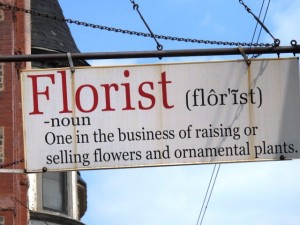
Love this sign! The original definition of a FLORIST is having a comeback!
I love the old-fashioned definition of a Florist, appropriately portrayed in a flower shop sign I noticed on a visit to Chicago: “One in the business of raising or selling flowers and ornamental plants.” It underscores my belief that if you grow flowers and ornamental plants, you can also arrange them.
Gardeners are especially qualified in the art of floral design. After all, we have an intimate relationship with our plants, their bloom cycle, their natural form and character – and their seasonality. We also know what colors and textures we like when combined in the landscape. A vase can be a little garden, its contents gathered and arranged to please the eye.
So give it a try. Design a bouquet. Channel your inner floral designer and begin your own year with slow flowers.
…sweet flowers are slow…
William Shakespeare
